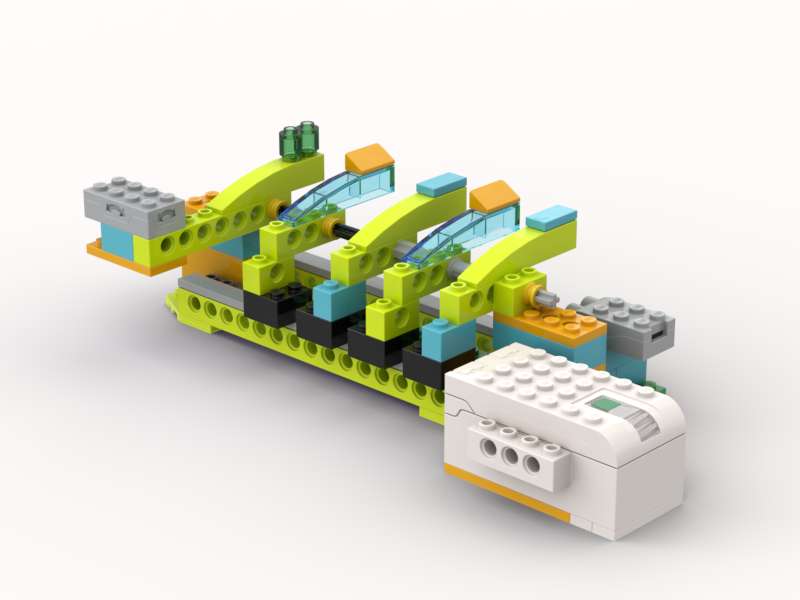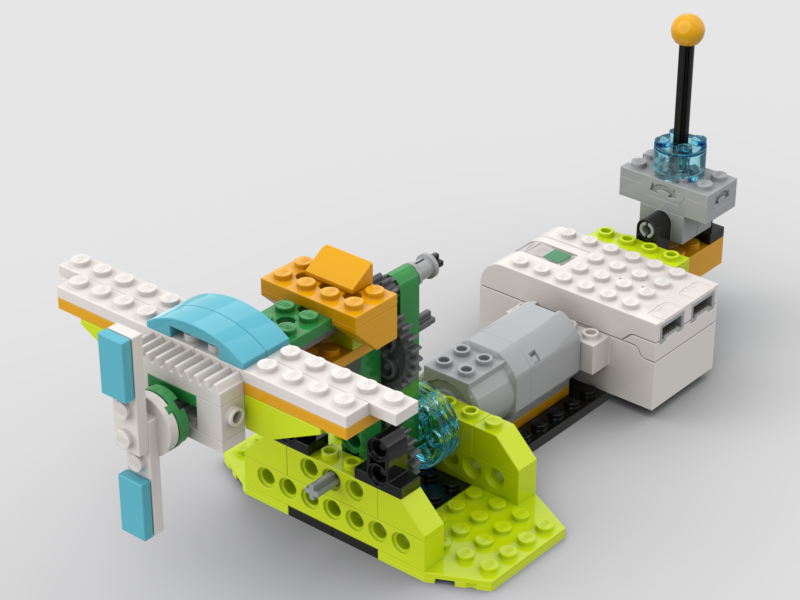 Español
Español
 English
English

Specialized in Robotics, Computer Science, Programming, Web Design, Physics and Mathematics. Proficient in computer tools and audiovisual resources (Wondershare Filmora Pro). My goal is to maximize both group and individual learning potential, using strategies, tools and techniques that allow students to feel supported and motivated.
High and low level programming languages: Fortran, Arduino, Pascal, C/C++, Python, block programming. Educational platforms: MakeCode Microbit, MakeCode Arcade, Minecraft Education Edition, Raptor, Arduino, Lego Spike Prime, Education Wedo, Scratch 3.0. Design and digital writing tools: Canva, Microsoft Office, Studio 2.0, Tinkercad.
Academic knowledge in Mathematics: linear algebra, calculus in one and several variables, differential equations, discrete mathematics. In Physics: from classical mechanics to introduction to quantum mechanics and the Schrödinger equation.
Experience in extension and research at the Faculty of Sciences, participation in academic events, written works, co-governance and mentoring of university students.
Workshop focused on developing computational thinking through platforms such as Lego Wedo 2.0, Lego Spike Prime, Micro:bit, Scratch 3.0 and Tinkercad. Projects progress from small-scale robots to complex prototypes, integrating programming and technology. Participation in robotics olympiads and promotion of creativity, problem solving and teamwork.
Primary Level (1st to 6th): Introduction to Scratch 3.0 and devices such as Micro:bit and Arduino, with projects to develop individual skills and teamwork.
Secondary Level (7th to 9th and 1st EMS): Advanced use of computer tools, Google and Microsoft ecosystems. Programming with Scratch 3.0, RAPTOR and Python. Emphasis on digital security and responsible use of social networks.
Teaching Python, loops, conditionals and algorithm creation. Development of programs, applications and video games, and STEM projects with MakeCode. Training in digital citizenship and technology security.
Educational projects in computer science, programming, robotics, mathematics and physics, adapted to the group's level. Use of Scratch, MakeCode, Micro:bit and Python, promoting computational thinking, creativity, teamwork, initiative and autonomy.
Use of educational platforms such as Matific, Vedoque, Plaza Sésamo, Pilas Bloques, Scratch and MakeCode Arcade. Training in cybersecurity, responsible use of technology, development of technical skills and logical thinking.
Access my annual plans for each institution by clicking on the links:
PC Repair and Network Maintenance Technician
Completed
Faculty of Engineering – Computer Engineering
On hold
Faculty of Sciences – Bachelor's Degree in Medical Physics
Completed. Not finished
Information Technology Analyst
In progress
ATAT Star Wars
Painter robot that creates Epitrochoids
Painter robot that creates circular drawing patterns.
A robot capable of loading objects.

Piano capable of generating different musical notes. Scratch 3.0 is required to hear the notes.
Guitar capable of generating different sounds. Scratch 3.0 is required to hear the notes.
Classic tyrannosaurus from Jurassic Park.
X-Wing from Star Wars.

Plane that performs stunts.
Goalkeeper capable of stopping balls.
Smart car capable of avoiding obstacles.
Project developed for the 2023 Ceibal Robotics Olympiads with 2nd grade primary students. The robot can be controlled via remote control, tablet or computer, using Scratch 3.0 and Lego Education Wedo 2.0. In addition to moving, it can paint, which allows encouraging creativity in students who do not yet have developed artistic skills.

Terreneitor 3000, a robot that showcases Uruguay's historical treasures. Controlled via the App Inventor platform, it can follow predefined routes using a color sensor. Implemented in 2025, the project combined technology, culture, programming and teamwork. The robot has a clamp to transport dinosaur fossils to its rear basket and memory to play pre-recorded audio. The participating students were from 5th grade primary, who actively contributed to its development.
The W.S.D.H Robot (Wedo Scratch Dynamic Humidity) was designed to be controlled via Scratch 3.0, Lego Education Wedo 2.0 and Micro:bit. Its main function is to detect dry or wet soil through a humidity sensor connected to the Micro:bit, which communicates with Scratch to mechanically activate a watering mechanism connected to a 3D printed hopper using the Tinkercad platform for its design. The project was driven by 4th year students, who applied robotics, chemistry, logic, computational thinking and teamwork to improve their school garden.
Pixel art style video game created in Scratch 3.0 to promote the use of different functions, conditionals and messages between objects.
PlayDeveloped in Scratch 3.0 with optional integration of Lego Education Wedo 2.0. The video game consists of collecting as many stars as possible in 60 seconds. Created in 2023 at Divina Pastora school by 6th grade students, the project continues to evolve in new versions and platforms. For a more realistic experience, you can build the Stellar Basket and activate the Lego extension within Scratch.
View projectCreated in Scratch 3.0, the objective is to travel as many kilometers as possible while avoiding the cars that appear on the road. The video game uses the Lego Education Wedo 2.0 extension so that the car, controlled by the player, reacts to a physical steering wheel built with the robotics kit. The construction manual was designed by the teacher and can be consulted here: Car Steering Wheel.
View projectCreated in Scratch 3.0, the objective is to destroy the space ghosts by moving the ship and shooting. The video game uses the Lego Education Wedo 2.0 extension so that the ship is controlled by the player. The construction manual was designed by the teacher and can be consulted here: Spaceship Steering Wheel.
View projectInspired by the game Fireboy and Watergirl, the video game consists of controlling both players and on other occasions each one separately. Still in development, it was used in 6th grade for the use of conditionals, sprites, scenario creation, routes and story.
View projectCreation of an interactive story on the MakeCode Arcade platform, inspiring creativity and imagination in students. The project begins with the creation of a story on paper; then Word or Google Docs is used to generate a digital library, and finally we bring that story to the arcade environment, so that readers feel part of it.
View projectImplemented at Seminario School under the S.T.E.A.M. educational methodology (which integrates Science, Technology, Engineering, Arts and Mathematics for interdisciplinary learning), a ramp meter was developed for the institution. This device allows verifying if the ramps comply with current legal regulations in Uruguay. Based on the entered data, the system determines if the constructed—or under construction—ramp is valid according to established standards. Integrative project intended for the evaluation and construction of new ramps to improve accessibility for people with disabilities.
View project